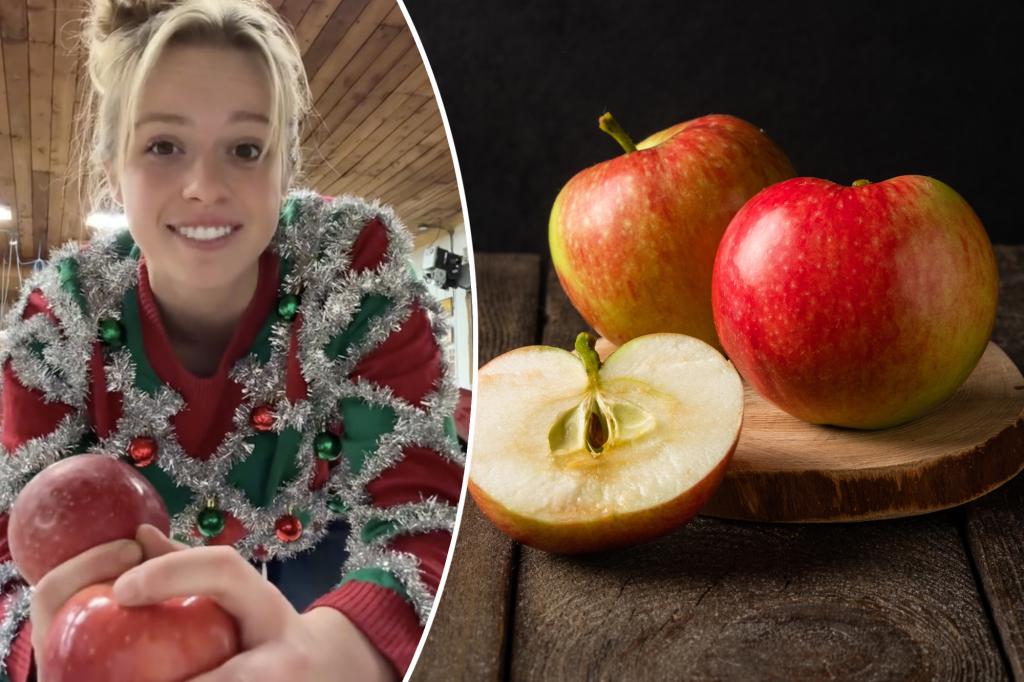Kait Thornton, a fourth-generation apple and pear farmer from Washington, recently addressed the concerns about the wax found on store-bought apples in a viral video that has garnered 5.3 million views. She assured viewers that the wax is not an unhealthy added ingredient, but rather a natural protective layer that helps prevent the apple from getting wrinkled and unattractive to pests. Thornton emphasized that apples are a superfood and should not be feared due to misconceptions about the wax coating.
In the video, Thornton demonstrated the difference between an apple straight from the tree, covered in a natural clay protective layer, and one that had undergone the cleaning process, which appeared shiny and bright. She showed that even the apple straight from the tree had a wax coating, which she explained is the cuticle of the apple, a naturally occurring protective layer found on many fruits and vegetables. This wax is vital for maintaining the overall health and appearance of the apple, and is produced by the apple itself.
When apples are cleaned to be sold, the natural wax is washed off along with any dirt and chemicals. To replace this protective layer, food-grade waxes such as beeswax, carnauba wax, and shellac are commonly applied to the apples. This new wax coating helps prevent spoilage, fungal infections, and nutrient loss in the apples. Thornton provided insights into the importance of waxing apples, dispelling myths and promoting a better understanding of the process.
Thornton’s educational video has been eye-opening for viewers, many of whom were unaware of the natural wax coating on apples and the reasons behind the waxing process. Some viewers appreciated the clarification and expressed gratitude for the information provided by a knowledgeable farmer. Others found the video to be enlightening and planned to share it with family members who have misconceptions about store-bought produce. The video highlighted the importance of listening to and learning from farmers and producers who possess specialized knowledge about the food we consume.
The use of wax on apples and other fruits and vegetables serves a critical purpose in preventing food waste and maintaining the quality of produce. By replacing the natural wax that is removed during the cleaning process, wax provides a protective barrier that extends the shelf life of fruits and vegetables. Thornton’s explanation of the different types of waxes commonly used in the food industry sheds light on the reasons behind the waxing process and reassures consumers about the safety and benefits of waxed produce. Overall, the video successfully educates viewers and dispels myths surrounding the wax found on apples, promoting a better understanding of food production practices.
In conclusion, Kait Thornton’s viral video about the wax coating on apples has opened up a dialogue about the importance of understanding the food we eat and where it comes from. Through her informative presentation, Thornton has provided valuable insights into the natural wax coating on apples, the process of waxing produce for preservation, and the reasons behind this practice. By addressing misconceptions and fears surrounding the wax found on store-bought apples, Thornton has helped viewers appreciate the role of wax in protecting and preserving fruits and vegetables. Her video serves as a reminder to trust in the knowledge and expertise of farmers and producers in the food industry, who play a crucial role in ensuring the quality and safety of the food we consume.


